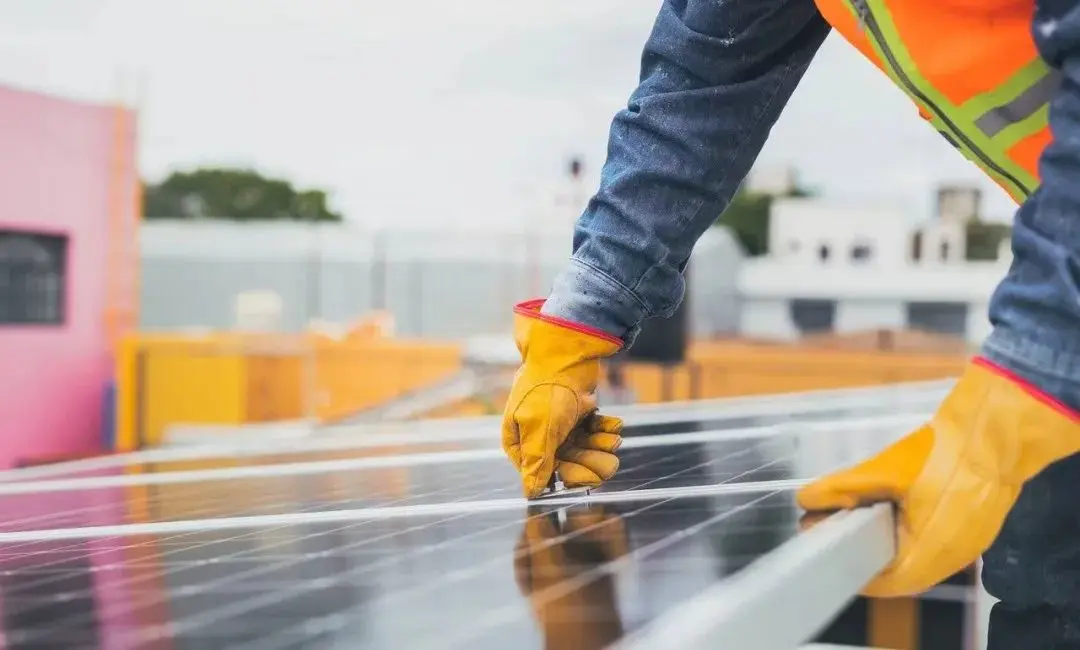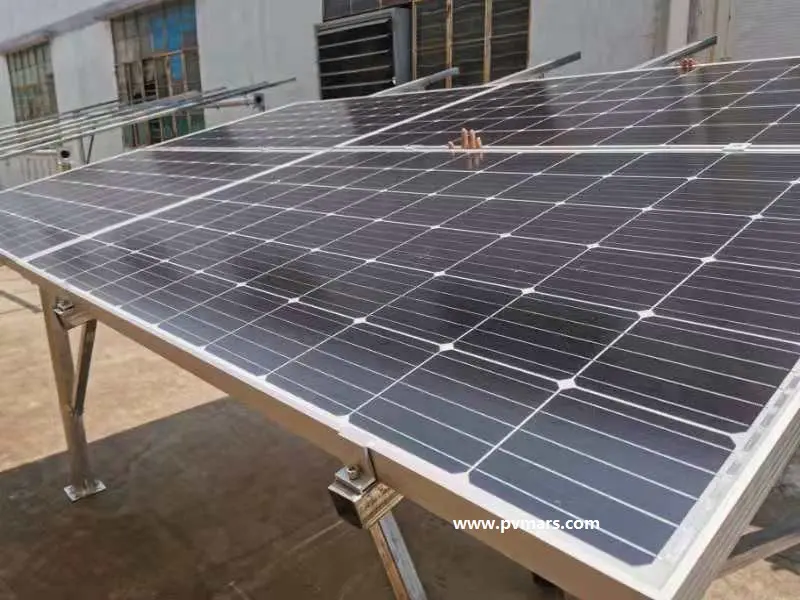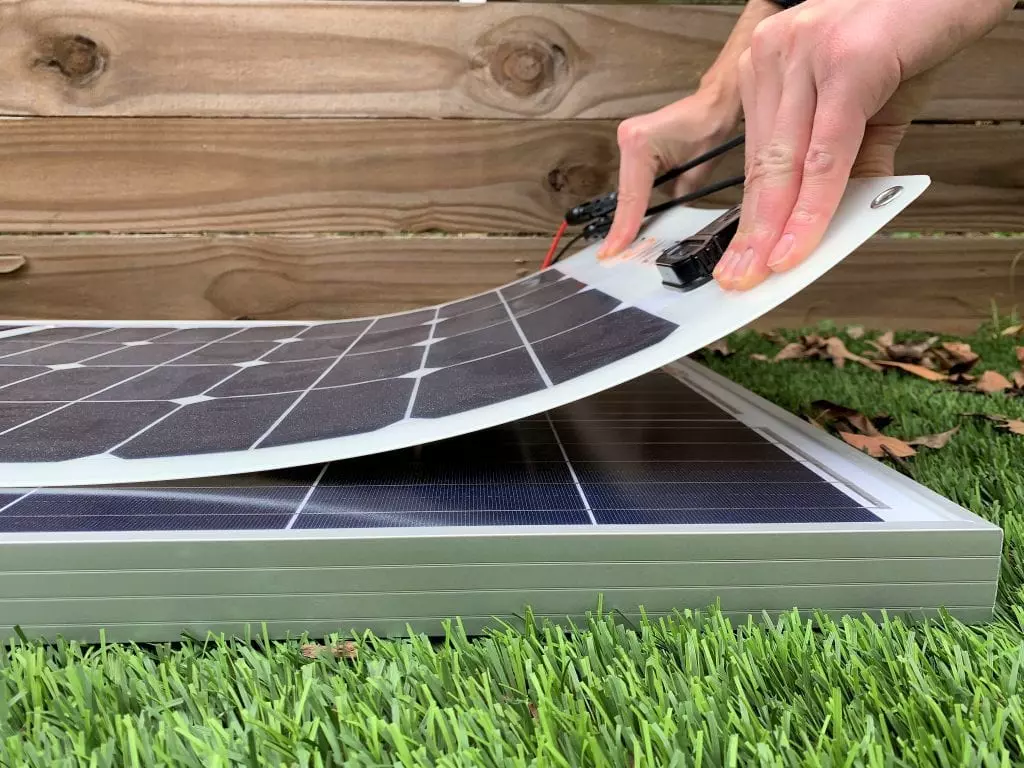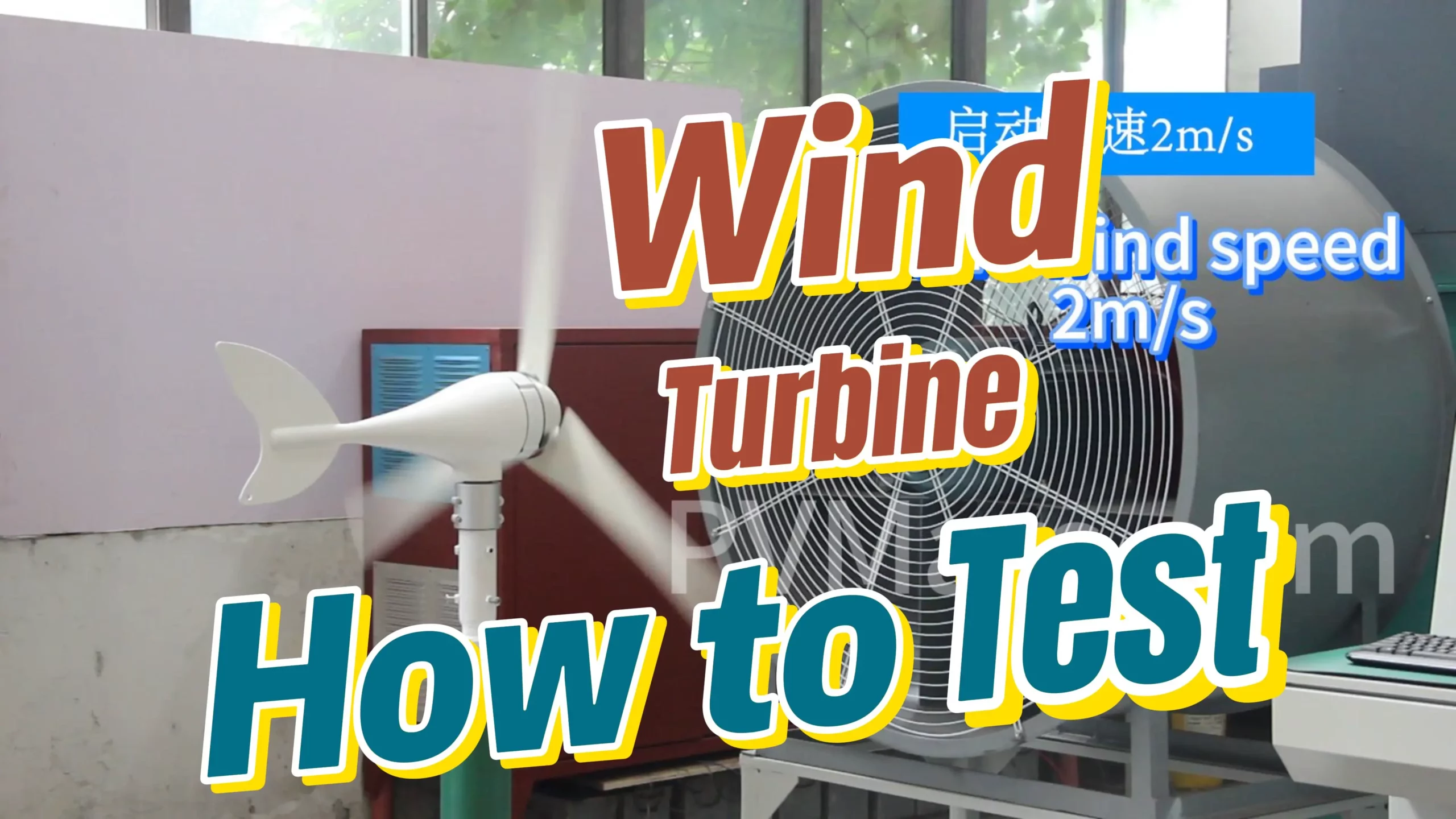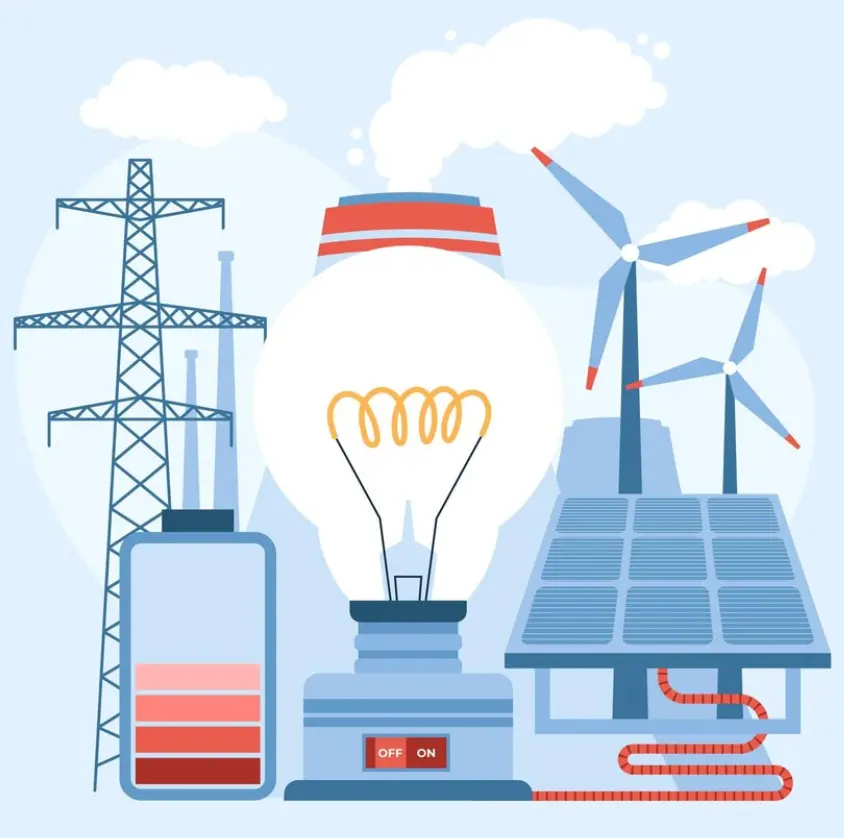What is the most worrying aspect of installing industrial and commercial solar power plants?
The issue is not only about power generation but whether the roof can support the weight of the photovoltaic power station. This relates to the load-bearing capacity of the roof structure.
By reading this article, you will be able to understand the relationship between roof-bearing capacity, solar panels, and installation location.
The following factors must be taken into account when calculating the weight of the photovoltaic power station.
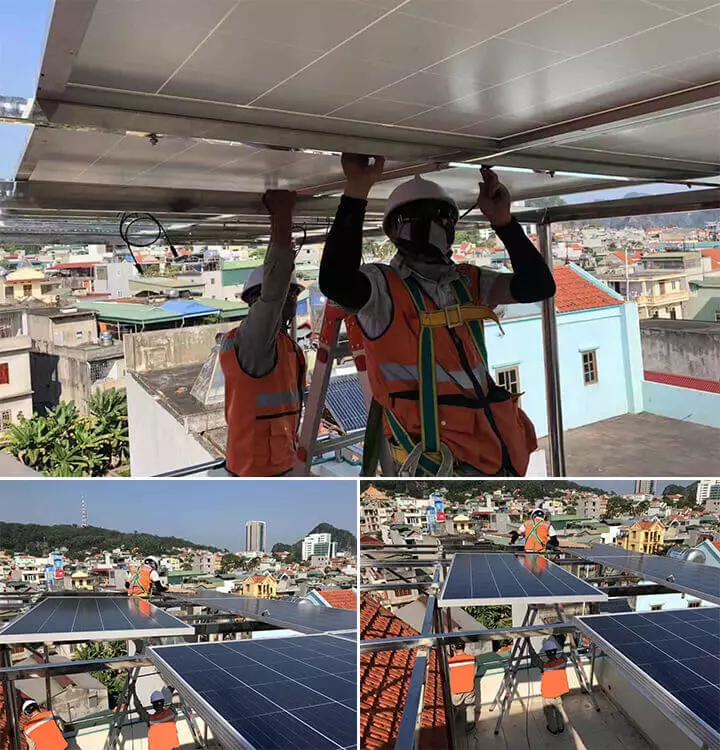
Weight of photovoltaic power station:
To begin with, it is essential to determine the total weight of the photovoltaic power station, which includes the weight of solar panel components, support structures, inverters, cables, and other components.
To better transmit power, reduce line loss, and store more electricity to the greatest extent.
The photovoltaic experts of PVMars recommend keeping the inverter, battery, load meter, etc. within 50-100 meters as much as possible.
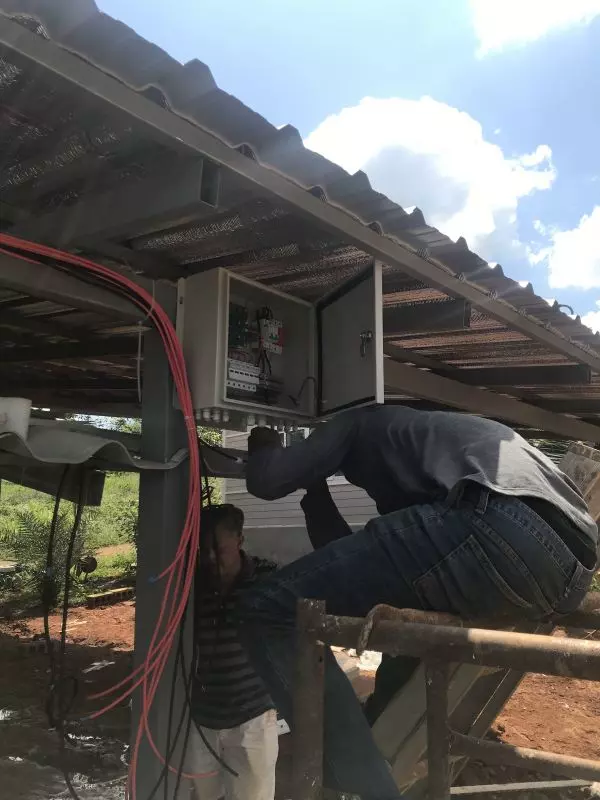
Roof structure and bearing capacity:
Know the structure type of the roof, such as concrete, wood, etc. And the bearing capacity parameters used in design and construction.
These parameters can usually be obtained in architectural design documents or by consulting relevant professionals.
According to the various materials of the roof, the PVMars solar system matches different fixing brackets, Please click the orange highlighted fonts to see how to install them.
Distributed load and area analysis:
Consider the layout and distribution of photovoltaic power plants.
For example, disperse the solar panel components evenly on the roof, or place them in one area.
Perform an area analysis to identify areas that may be subject to greater stress, such as air vents, lower eaves, etc.
Wind and earthquake impact:
The impact of local wind and earthquake and other natural disaster conditions on roofs and photovoltaic power stations.
These factors need to be calculated in conjunction with local weather data and building codes.
Before the natural disaster strikes, how can we minimize the loss, you can read this article to avoid it.
Structural strength calculation:
According to the roof structure and the layout of the photovoltaic power station, the structural strength calculation is carried out.
This usually needs to be done by a professional structural engineer.
PVMars engineers have 15 years of installation experience, combined with CAD, to provide you with a complete design distribution data map.
Professional load report:
It is very important to determine whether solar panels can be installed with loads.
There must be professional load reports in the preliminary construction of solar projects.
Roof load certificate = roof load report = test and appraisal report of roof structure bearing capacity.
Refers to the rechecked calculation value of the bearing capacity of the roof structure, which is the maximum load that the roof can bear under the premise of ensuring the safety of the house.
Load is divided into dead load and variable load:
The variable load is the load temporarily applied to the roof under the consideration of the limit state.
Including live loads, wind loads snow loads, earthquake loads, etc. It cannot be occupied.
Dead load refers to the structure’s own weight and dust load.
Solar panels need to be operated for more than 25 years, which is a new constant load.
Common industrial and commercial roofs are mainly divided into two types:
Reinforced concrete roofs and colored steel tile roofs.
Concrete is relatively strong, and it is unlikely that the load will not be insufficient.
Most of the cases appear on colored steel tiles.
When collecting funds, pay attention to the construction time of the building, the corrosion of the roof, etc., which will affect the reinforcement plan and reinforcement cost.
Typically, solar panels are installed on steel roofs. Each square meter will increase the weight by about 15-20 kg.
The steel-concrete structure factory roof will increase its weight by about 80 kilograms per square meter.
Generally, the roofs of steel structure buildings are unmanned, and the design values of the live loads of the roofs are taken according to the specifications.
They are all relatively small, and the snow-free areas in the south are generally 0.5 kN per square meter, which means about 50 kilograms per square meter.
The design value of roof dead load is generally 20 kg per square meter.
Specifically, it is determined according to the selection of the color steel tile, and the structural drawings of the original building need to be obtained during the project inspection.
Focus on checking the design values of the loads considered in the architectural design instructions, and confirm whether there are additional loads in addition to the self-weight of the roof.
For example, pipeline modulation equipment, roof attachments, etc., to confirm whether there is a margin for the dead load to install the photovoltaic power station system.

Last
To sum up, calculating whether a photovoltaic roof can bear the weight of a photovoltaic power station is a complex process.
Several factors need to be considered such as photovoltaic power plant, roof structure and load-carrying capacity, distributed loads and area analysis, wind and earthquake effects, and structural strength.
It is best to consult our company’s professional engineers or structural engineers for detailed calculations and evaluations.
PVMars Energy specializes in the construction and installation of photovoltaic power station electrical engineering.
Including but not limited to operation and maintenance service providers, installation and maintenance of distributed photovoltaic power stations, installation of industrial and commercial solar power plants, and installation, operation, and maintenance of solar power stations on factories and household rooftops.
Photovoltaic transformer grid-connected cabinet installation, high and low-voltage power distribution equipment testing and testing, transformer testing and maintenance, and other services.

